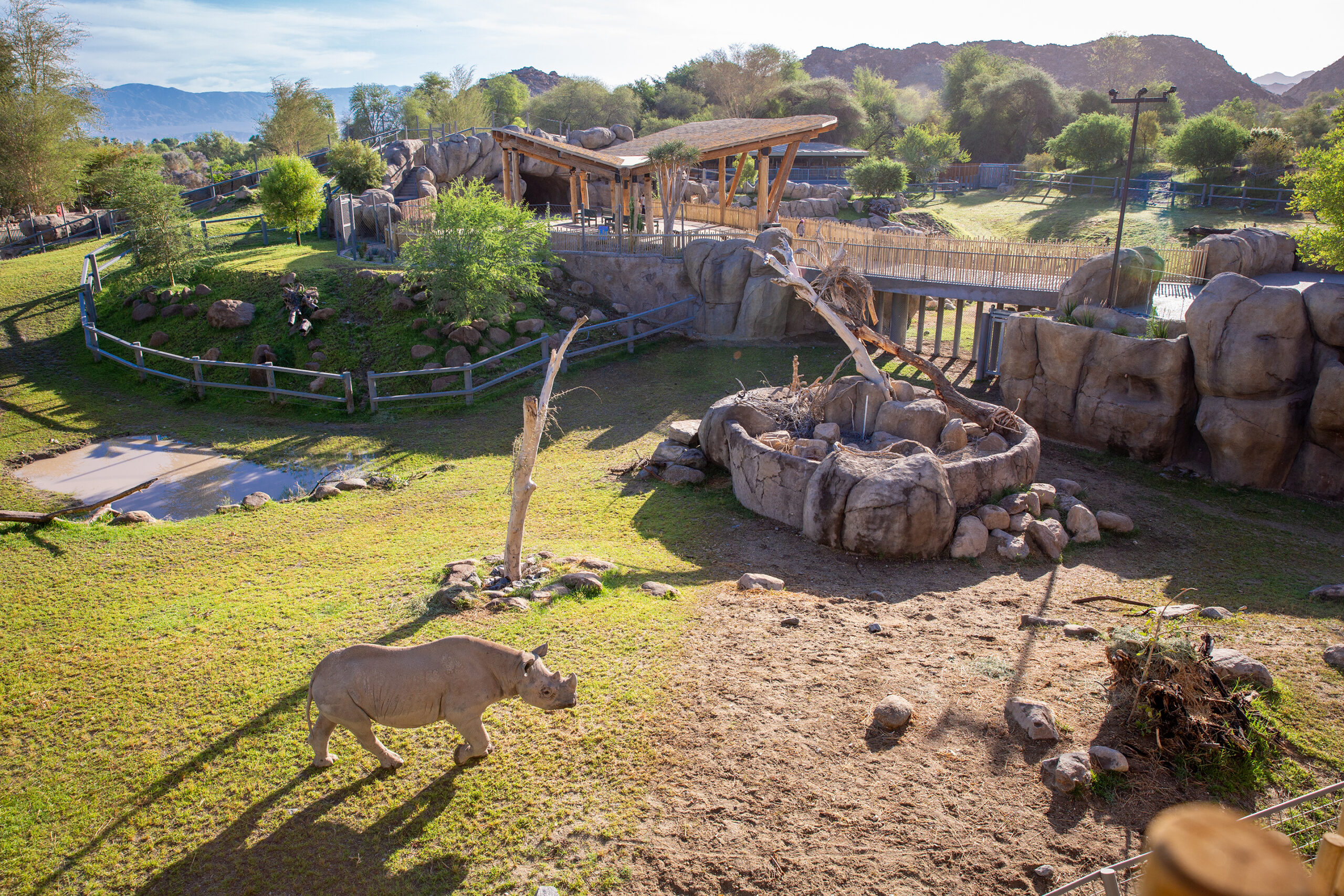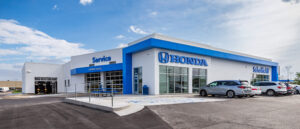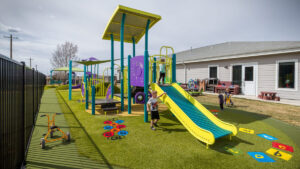Join TESSERE Zoos and The Living Desert Zoo & Gardens in Palm Desert, California, for a virtual tour of Rhino Savanna.
Covering over 4-acres and home to 12 African species, Rhino Savanna is a sprawling state-of-the-art exhibit. Featuring the most dynamic mixed-species black rhino habitat in the United States, its progressive approach and visionary innovations make for an enriching, stimulating environment 24/7/365. A guest-facing animal nutrition center embodies The Living Desert Zoo and Gardens’ commitment to transparency and immersive guest experiences spark wonder and awe.
A special thank you to RoxAnna Breitigan, Director of Animal Programs, Erin Scott, Marketing and Public Relations Manager, Christine Montgomery, Curator of Animal Behavior, and their teams for engaging in and producing this virtual tour experience.
Key Features & Innovations
1.) Returning to the Objectives for Greater Outcomes
Throughout any design process, a range of possibilities, competing priorities, limited resources, and diverse stakeholders can result in wavering direction or misdirected compromise. At the onset, The Living Desert Zoo & Gardens team worked collaboratively to establish goals, objectives, guiding principles, and non-negotiables. These served as the project’s North Star throughout design and pushed the team to stretch, flex, and think creatively, ultimately resulting in an experience where animals are thriving, guest expectations are exceeded, and the story of the critically endangered black rhino resonates.
2.) Embracing the Power of Dynamic, Flexible Mixed-Species Habitats
By questioning assumptions and remaining true to their objectives, the team successfully realized the most dynamic mixed-species black rhino habitat in the United States. Animals are co-existing and thriving with strategically placed exclusion areas, barriers of varying sizes, and interrupted sight lines. Changing topography, water holes, scatter feeders, a wobble tree, temperature gradients and more provide for an enriching environment 24/7 where animals are “living their best lives”, exhibiting a range of natural behaviors including day-night cycles, mud wallowing rhinos and pronking springbok.
These dynamic, flexible mixed-species habitats are powerful mechanisms not only for advancing animal welfare through rich, stimulating environments, but for zoological population sustainability & building empathy in guests. By intentionally incorporating mixed-species habitats, zoos can support a more diverse range of species. These habitats are proving to be more compelling to guests, with preliminary results of a visitor study being done by the Zoo showing that stay time is significantly higher at their multi-species habitats than at single species habitats. This presents an opportunity to build deeper connections and greater empathy through “continuity”, with social psychology researcher Gene Myers suggesting that the more time spent with an animal increases a person’s understanding of and empathy toward the animal. Empathy for animals is integral to moving guests towards taking caring action on behalf of animals and our natural world.
3.) Building Trust Through Transparency
Driven by a commitment to building trust with the community through transparency, the team actively sought to incorporate opportunities to showcase The Living Desert Zoo and Gardens’ excellence in animal care throughout the experience. With one wall made entirely of glass, the Animal Care & Nutrition Center gives guests a literal window into the quality and science behind nutrition at the Zoo. Nearby, the hoof stock barn wall features a sliding panel that can be opened for scheduled or impromptu animal care demonstrations and the rhino encounter pavilion is regularly used for training sessions. The habitat’s overall design allows for keepers to safely interact with the rhinos and other animals while on habitat, which facilitated the first rhino blood draw being done in view of guests.
4.) Designed to Elevate the Guest Experience
First-time visitors to Rhino Savanna have been moved to tears, and not just by the progressive inclusion of an adult-changing table in its restrooms. Applying Frank Lloyd Wright’s design theory of “compression and release”, guests begin by traveling through a long, dark tunnel lined with one of the zoological community’s largest colonies of naked-mole rats. When they emerge, they are met with stunning, expansive views of the black rhino mixed-species habitat. Audible gasps of wonder and awe are an everyday occurrence, and something the Zoo’s staff delights in on otherwise mundane or stressful days. While immersed in the experience, guests can cool off with misters and fans in the Conservation Station, the patio at the Crash Café includes a vista over the savanna, and an event plaza provides revenue generating opportunities.
5.) Shifting from Habitat to Ecosystem Management
Systems and infrastructure for care are integral to rich, stimulating environments for animals and guests. With the diversity of species in Rhino Savanna, the newly hired animal care team is intentionally shifting from individual and habitat management to group and ecosystem management. The built environment strategically facilitates flexible and efficient care; exclusion areas provide keepers with abundant opportunities to engage and enrich animals while on habitat and the hoof stock barn was designed with a built-in scale, camera system, interchangeable stalls, a sun stall, and positioned adjacent to the parking lot for animal transport.
Rhino Savanna was designed by TESSERE Zoos. See more pictures here.




